Why do we associate UFOs with a saucer shape design, and why is there no more saucer-shaped prototype aircraft today?
Interest in flying saucers has surged since the rather shocking admission by the United States Navy in late 2019 that a succession of leaked videos of UFOs – which the US military prefers now to call “Unidentified Aerial Phenomena” or UAPs – are real.
Whatever the UAPs are, they show up on radar and can fly circles around US jets; attempting to disbelieve in them is fast becoming an exercise of willful ignorance.
This doesn’t mean that they are necessarily from other planets, although it’s not logical to deny the possibility. It does mean that they exist, many pilots and other military personnel have observed them, and we have no idea what they are.
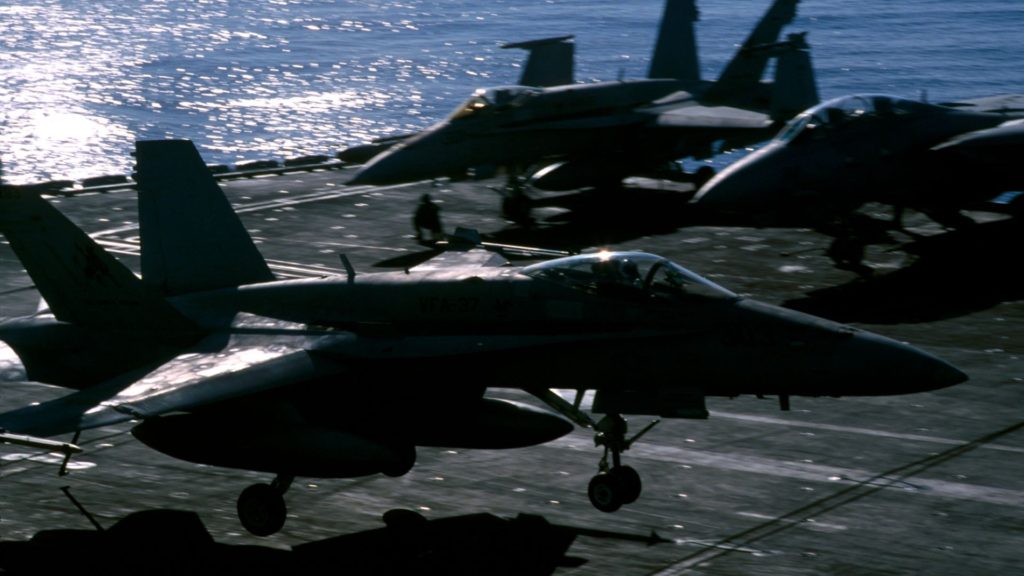
The airfoil/lifting plane technology of human flight is clearly the operative design principle behind the US Navy F/A-18. Video taken by Navy pilots during intercepts near bases or US supercarriers shows unknown aerial vehicles without wings but having far superior performance characteristics.
The videos, dating from 2004, 2014, and 2015, are gun camera recordings shot by US Navy fighter pilots attempting to intercept what appear to be aerial vehicles performing far beyond the capabilities of human-built aircraft and include the cockpit chatter of the astonished pilots.
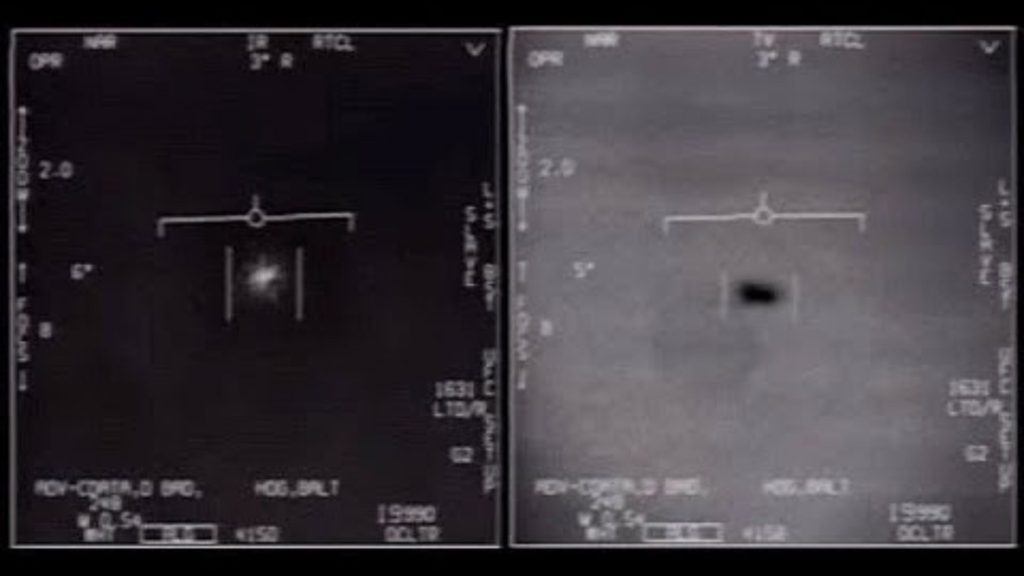
Anecdotally, the US Navy videos are most likely only the tip of the iceberg, as personnel and intercepted radio have established that US bases and aircraft carrier strike groups are sometimes shadowed or observed by these UAPs.
The US Navy does not claim to know their origin (quite the contrary, as the UAP acronym indicates).
But the fact that the government admits its services have been scrambling jets to intercept these objects and no longer denies their existence is a significant validation of public interest and concern regarding these objects.
Assuming for the sake of argument that extraterrestrials are visiting Earth in such vehicles, we can say little about the shape from their perspective other than to guess that their designs probably obey the dictum that “form follows function.”
There may be certain aerodynamic benefits (detailed below) for use in an atmosphere.
Still, the primary consideration would almost certainly have to be the propulsion technology; whatever advanced propulsion system they use is logically at its most efficient when the vehicle is shaped this way.
Humans associate alien spacecraft with the saucer shape because some of the best-known reports of UFOs through the mid to late 20th Century described them with this form.

There have been hundreds of UFO reports, including a large and widely observed number of sitings over Washington DC in 1952 and corroborated by radar.
However, other shapes besides the saucer have been reported. No doubt, once the saucer trope became established, subsequent hoaxes and works of fiction (books, TV, movies, etc.) reinforced it.
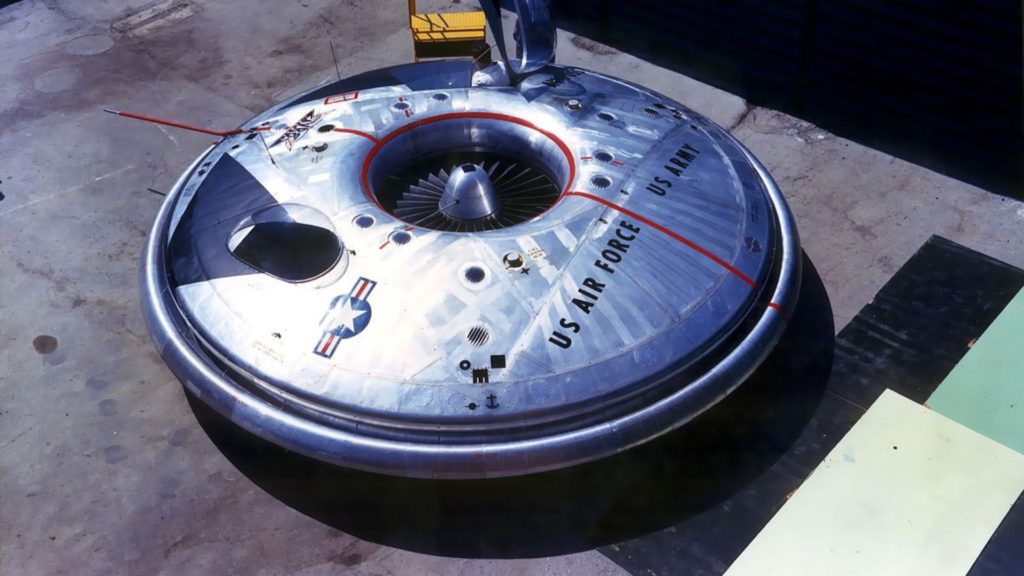
A saucer-shaped aircraft of the late 1950s, the Avrocar was a prototype of what would have been a much larger flying saucer, the Avro Arrow. Many technologies explored and tested in this once-classified program have been incorporated into cutting-edge aircraft.
The same thing has happened with the “little green men” style aliens with big eyes, who resemble tiki carvings or dolls from Peru. Now, this look is media shorthand for “extraterrestrial.”
Assuming that downed saucers were recovered and are being reverse engineered, there is little likelihood that aliens from the crews are assisting the program.
The stories claim that small bodies were recovered from the three crashed saucers, but no living people.
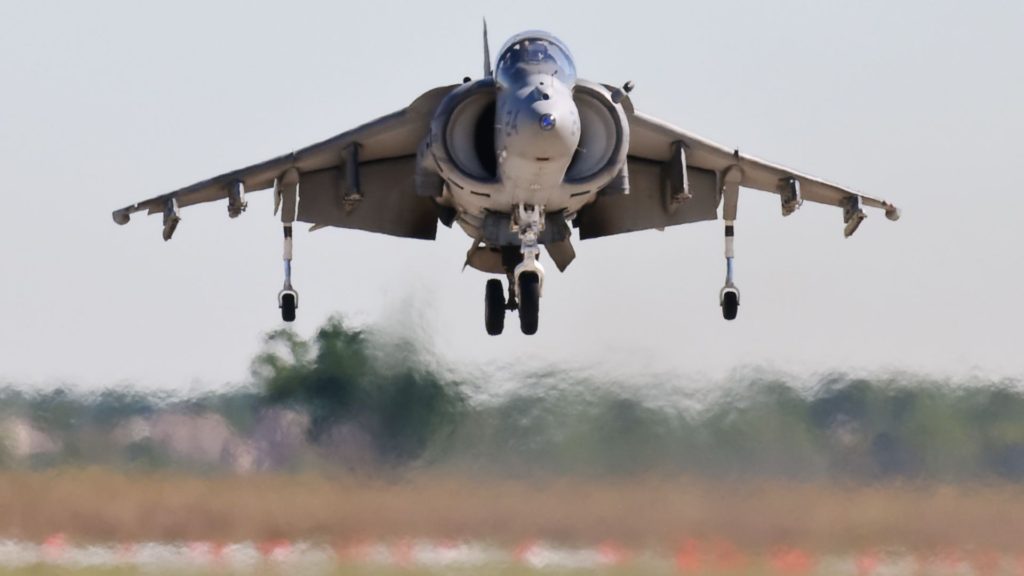
The Harrier Jump Jet can take off and land vertically thanks to clever use of the jet’s exhaust, a system that underwent early work in Avro’s work on their unsuccessful Cold War-era flying saucer jet.
We may be sure that flying saucers are not “aircraft” in the sense that human flying vehicles are.
Our technology for flight is based on the use of lifting surfaces or airfoils (e.g., wings, helicopter blades) driven through the air in general by internal combustion engines.
And while it might be possible to make a jet-powered flying saucer-shaped aircraft today, it proved infeasible when Canadian and American engineers tried it during the Cold War.
A Canadian company called Avro worked in the 1950s, and early 1960’s on a saucer-shaped aircraft for the United States Air Force.
The hope was that this vehicle would be super-fast and efficient in order to intercept Soviet bombers.
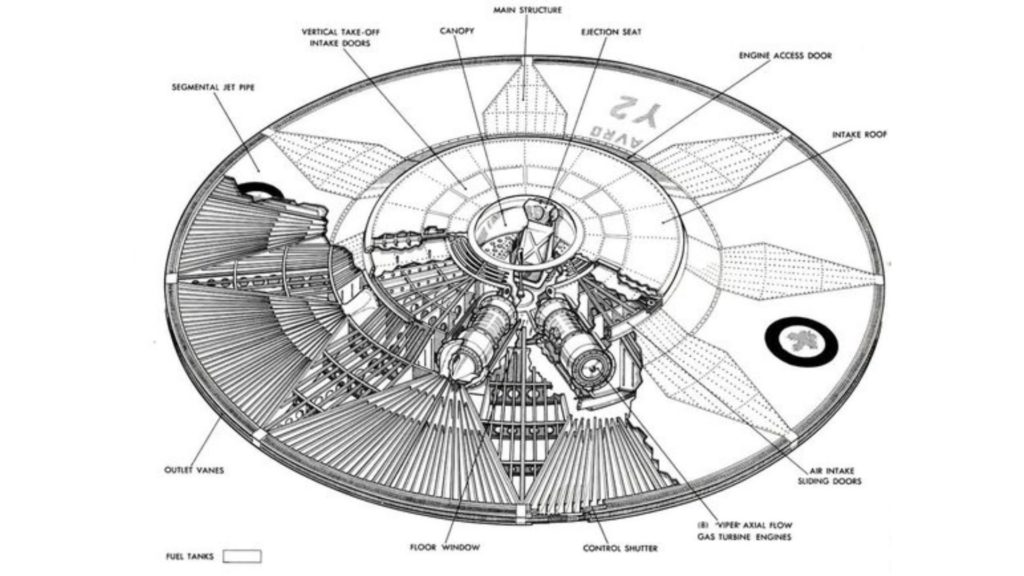
A flying saucer designed using human technology of the 1950s, the Avro Arrow, proved unsuccessful because of aerodynamic instability. With computers, we can resolve the issue today, but not in the 1950s, using only mechanical solutions.
The concept of the saucer shape was based on its surprising advantages in flight. For example, engineer John “Jack” Frost at Avro was inspired by an unusual property of airflow over certain surfaces.
Airflow tends to cling to gently curved surfaces, a phenomenon called the Coandă effect.
The results revealed that engine exhaust could be routed across the fuselage to the area just under a saucer, where it would form a cushion of air on which the craft could hover. There are other reasons to consider this geometry.
“The flying saucer configuration offers benefits,” says Russell E. Lee, a curator at the Smithsonian National Air and Space Museum in Washington, DC.
“It’s totally symmetrical, so in theory, it should be omnidirectional—if you can figure out how to redirect thrust in an instantaneous and efficient manner.”
Additionally, there was interest in the performance and uses of the disc shape from the fledgling American space program, interest which eventually found expression in the shape of space capsules’ re-entry surfaces.
The test vehicles that were built at Avro’s Ontario facility, however, proved unsuccessful.
The engineers tried everything they could to solve this problem, including shaped nozzles, spoilers, bigger engine transition doors, skirts, vanes—even, at the suggestion of the Air Force, and to Frost’s dismay, a tail. Nothing worked.
And the Avro aircraft had another problem: despite having massive jet engines, it was underpowered.
The engineers attempted to steer it by re-routing the airflow through the vehicle body, but this led to energy-reducing turbulence.
Although the Avro Arrow program was canceled in 1961 due to instability and power issues, many principles explored in the program remain valid and are used in today’s most advanced aircraft.
Sophisticated stealth technology was made possible through the use of onboard computers that make constant minute adjustments; in this way, even a theoretically unstable aircraft design can stay airborne.
Examples include the American stealth fighter and stealth bomber and recent high-performance fighter jets such as the F-22 Raptor and F-35 Lightning.

The B-2 Spirit, also known as the Stealth Bomber, incorporates a number of technologies that have been refined and made practical since the Avro Arrow program. The inherent instability in this plane, which is all but invisible to radar, is so great that it requires computers to remain airborne.
The power issues that plagued the Avro Arrow program were eventually resolved as well. Instead of re-routing the jet flow, engineers found it was far more efficient to swivel the exhaust nozzle.
This advance eventually led to one of the most successful military aircraft of the jet age, the Hawker-Siddeley Harrier Jump Jet, and its successors, such as the “B” version of the F-35, which also has “Vertical/Short Takeoff and Landing” (VSTOL) capability, and the F-22, which uses ducted exhaust to achieve unprecedented maneuverability.
A human-built flying saucer, whether built in the 1950s or today, would still be subject to the limitations imposed by our technology – that is, despite their unconventional shape, they would still be conventional aircraft.
As it happens, the more conventional “bird shape,” or the related delta shape, remains the best for our technology.
This is why we don’t see prototype saucer aircraft – their technology is incorporated into more conventional shapes.
When humans do resume building flying saucer-shaped vehicles, it will probably be because we have developed propulsion systems that are based not on mass reaction but on something like field manipulation that today counts as exotic physics.
At this point, we can send our saucers to someone else’s planet and set them wondering.
